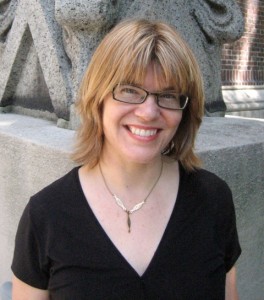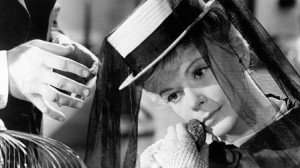Theater Interview: Viva August Strindberg — The Great Swedish Modernist
August Strindberg’s work unquestionably has not received the degree of popular acclaim in America that it deserves. It’s a bit mysterious, given that major U.S. playwrights—Eugene O’Neill, Edward Albee, Tennessee Williams—have openly acknowledged their debts to Strindberg.
By Bill Marx
Harvard Strindberg Symposium. Most events (check schedule) at the Barker Center, 12 Quincy Street, Harvard campus, Cambridge, MA, March 2 and 3. All events free and open to the public.
One of the more frustrating byproducts of America’s mini-series version of cultural history is that some geniuses are pushed into the limelight, while others are held back in the shadows, as if they are not quite respectable enough for prime time.
This year marks the centennial of the death of one of the giants of modern drama, August Strindberg, who also happened to be a compelling novelist, polemicist, and visual artist. An unruly Swedish Renaissance man and modernist, he has all the makings of a headliner.
Yet Strindberg has never gotten the appreciation in America he deserves. Perhaps it is his reputation as a misogynist or his wild intellectual and sexual proclivities, ranging from indulgences in the occult to stabs at bohemian rebellion. (His 1879 novel The Red Room is a sharp, satiric salute to free-living artists.) Despite hoary proclamations that his plays Miss Julie and The Father are modern classics, an air of the unsavory reprobate still hangs over the writer and his work. There’s little of the dashing, romantic iconoclast about him or his ideas, and Ibsen is so much more presentable.
Given his ferocious—at times visionary—art and its prescience about so many contemporary issues, any serious attempt to shine a light on Strindberg is welcome. Harvard University is marking the anniversary with an ambitious, two-day symposium on the writer, billed as “a collection of lectures, screenings, performances, and discussions.” Via e-mail, I sent some questions about the confab to one of the symposium’s participants, Ursula Lindqvist (Preceptor in Scandinavian, Harvard University). She sent back some lively responses.
Lindqvist’s mention of The Cutting Ball Theater‘s year-long staging of Strindberg scripts, including his Chamber Plays (my personal favorite of the group is The Pelican), makes me jealous. Would any Boston theater have the courage to take on such an ambitious project? I am not holding my breath.
Arts Fuse: What are goals of the symposium? Is it only for academics?
Ursula Lindqvist: Our foremost goal is pedagogical; that is to say, this is not a meeting of academics talking among themselves. We have explicitly invited the greater Boston community to come and learn more about August Strindberg from a panel of experts and theater practitioners, and we intend to involve the audience in every aspect of the symposium through question and answer sessions, roundtables, a theater workshop, and receptions that encourage informal mingling.
We’re also screening a couple of terrific film adaptations, one of which has not been screened publicly before. The entire symposium is free and open to the public. We want to bring together a variety of constituencies (e.g. the theater community, the academic community, local Scandinavian cultural organizations, arts-interested, Boston-area residents) to join in a rediscovery of the work of this important modern playwright in the centennial year of his death.
AF: Strindberg’s literary and popular standing in America has been problematic. Why do you think that is?
Lindqvist: I wouldn’t call it problematic, but his work unquestionably has not received the degree of popular acclaim in America that it deserves, particularly compared to his modernist peers such as Henrik Ibsen of Norway and Maurice Maeterlinck of Belgium. It’s a bit mysterious, given that major U.S. playwrights—Eugene O’Neill, Edward Albee, Tennessee Williams—have openly acknowledged their debts to Strindberg; in fact, O’Neill’s original, published essay lauding Strindberg’s plays is featured in our Houghton Library special exhibit on Saturday.
And Strindberg’s plays continue to be performed in the United States; in fact, Alan Rickman directed Creditors at the BAM in New York to strong critical reviews in 2010, and the Cutting Ball Theatre in San Francisco is staging all of his chamber plays this year.
So theater practitioners and partisans recognize Strindberg’s importance, but the general public has been slower to embrace him. I can speculate that this may be due in part to Strindberg’s unfortunate reputation as a misogynist and Ibsen’s as an undisputed feminist—which are highly reductionist views of both playwrights. This symposium, which is free and open to the general public, is a step toward rectifying this and providing the public with a more nuanced view of Strindberg’s work, whose themes and ideas definitely still resonate today.
AF: How important a role has translation played in Strindberg’s reception in English? Has Ibsen been luckier in terms of receiving effective translations than Strindberg?
Lindqvist: Definitely, and I do think this has played a role. It’s funny; Ibsen had an enormous portrait of Strindberg hanging on the wall directly above his writing desk in the Oslo apartment where he lived the final years of his life; he definitely felt challenged by the passion and heft of Strindberg’s work. In the aftermath of the phenomenal success of Ibsen’s A Doll House (1879), for example, Strindberg published a short story with the same title that was a pointed critique of the feminist embrace of Ibsen’s play. The play has been translated and performed in multiple languages worldwide almost constantly since its inception, and I know of only one published English translation of Strindberg’s marvelous short story collection, Married (1884), which Turtle Point Press publishes as an “on-demand” paperback. It’s really too bad, because reading Strindberg’s short story opens up Ibsen’s important play to much richer interpretations and provides such important cultural, historical, and philosophical context for the original. It’s also a very fun read; I highly recommend it, and whenever I teach Ibsen’s play A Doll House in my Nordic Theatre and Drama course, I always make a point of teaching Strindberg’s short story “A Doll House” alongside it.
This short story collection also occupies an important moment in Swedish literary history, as Strindberg was forced to stand trial on obscenity charges after its publication (he was exonerated but became quite bitter from this experience). This exemplifies another key difference between Ibsen and Strindberg: Ibsen’s work was embraced by the Norwegian cultural establishment from about the midpoint of his career onward, and he received an artist’s stipend so that he could live comfortably and focus on his playwriting (he wrote A Doll House, for example, while residing in sunny Italy). Strindberg, on the other hand, struggled financially for most of his life and was constantly writing essays and publishing literary works that were critical of Sweden’s cultural, social, and political establishments. He remained a pariah—except for among the working class, who idolized him—until well after his death in 1912.
During his life, many of Strindberg’s plays had their premieres outside of Sweden (for example, in Paris), and several of his major prose works were actually published in French. Strindberg has been posthumously lauded as one of Sweden’s greatest writers—”Sweden’s Shakespeare,” he is sometimes called—but I think his outsider status during his life, and immediately following his death, hampered the circulation and critical appreciation of his work.
AF: Much of the symposium seems to be dedicated to exploring Strindberg’s achievement as a playwright. Where does Strindberg the novelist stand today? And which of his plays do you think have been neglected by English-language theaters?
Lindqvist: It’s true that we have capitalized on Strindberg’s reputation as an international playwright, as that is how most Americans know him. My introductory lecture, “Strindberg 101,” is designed to provide the audience with a better sense of Strindberg’s tremendous range as an artist. In terms of his status as a novelist, I would urge people to seek out a recent book published by one of our guest speakers, Anna Westerståhl Stenport of the University of Illinois, titled Locating August Strindberg’s Prose: Modernism, Transnationalism, and Setting (University of Toronto Press, 2010). We should have a copy of this text on display at the symposium’s book table, along with other scholarly works. We’ll also have ordering information handy for those who are interested, as well as copies of a representative bibliography of Strindberg’s work and critical work on Strindberg, which our student research assistant Nora Garry has prepared.
In terms of which of his plays are performed and which are neglected, I definitely think that his later plays, his so-called “chamber plays,”—with the possible exception of The Ghost Sonata (1907)—are often neglected, and this is why I am absolutely thrilled that San Francisco’s Cutting Ball Theatre has decided to stage all of them in its current season. This question will be addressed in considerable detail in Saturday’s public lecture by Professor Eszter Szalczer of SUNY Albany titled “Strindberg on the American Stage.”
AF: There is a new biography of Strindberg coming from Yale University Press in May. Has there been any important revelations about his life in recent years?
Lindqvist: I can’t think of any major personal revelations—he wrote so candidly and prolifically about his life in 13 semi-autobiographical prose works that perhaps there wasn’t much left to discover (we’ll see when Yale UP’s biography comes out!)—but his work definitely has been receiving renewed critical attention in recent years. In particular, Swedish feminist scholars are attacking the notion that Strindberg was a misogynist writer whose work deserves to be rejected or ignored. A collection of essays co-edited by Professor Stenport in 2006, titled Det gäckande könet: Strindberg och genusteori [The elusive sex: Strindberg and gender theory], is an excellent example of this, as is UCLA Professor Ross Shideler’s book Questioning the Father: From Darwin to Zola, Ibsen, Strindberg, and Hardy (Stanford UP, 1999).
AF: Have the film versions of Strindberg helped or hindered appreciation of his art?
Lindqvist: Oh I think they’ve definitely helped. I always use these when I teach Strindberg, particularly when there are vastly different filmic interpretations of the same play (as in the case of Miss Julie). We’ll be screening two phenomenal film adaptations of Strindberg plays, Miss Julie and The Stronger, at the symposium; the former is Alf Sjöberg’s classic 1951 film that won much acclaim at Cannes, and the latter is a beautiful, new, short dance film by New York artist Gabrielle Lansner that never has been screened publicly before. Lansner herself will be on hand to introduce her film and answer questions about her film, and I will introduce Miss Julie, which is an important cinematic work in its own right (I also teach a course on Nordic Cinema here at Harvard).
AF: Scholar Arvid Paulson argued that though Strindberg was born in the nineteenth century he was “preeminently a twentieth-century author.” What does Strindberg’s work offer twenty-first-century sensibilities a hundred years after his death?
Lindqvist: This isn’t a question—it’s a book topic! Here are just a few examples I can think of, off the top of my head. Some of the most aggravating social and philosophical problems of our time—class struggle between haves and have nots; the credit crisis, crumbling social institutions, and corrupt financiers; the stickiness of redefining gender roles to fit new realities; the elusiveness of happiness and the ubiquitousness of suffering—these are all major themes in Strindberg’s extensive body of work.
Bill Marx is the editor-in-chief of The Arts Fuse. For over three decades, he has written about arts and culture for print, broadcast, and online. He has regularly reviewed theater for National Public Radio Station WBUR and The Boston Globe. He created and edited WBUR Online Arts, a cultural webzine that in 2004 won an Online Journalism Award for Specialty Journalism. In 2007 he created The Arts Fuse, an online magazine dedicated to covering arts and culture in Boston and throughout New England.
Tagged: August Strindberg, Harvard Strindberg Symposium





